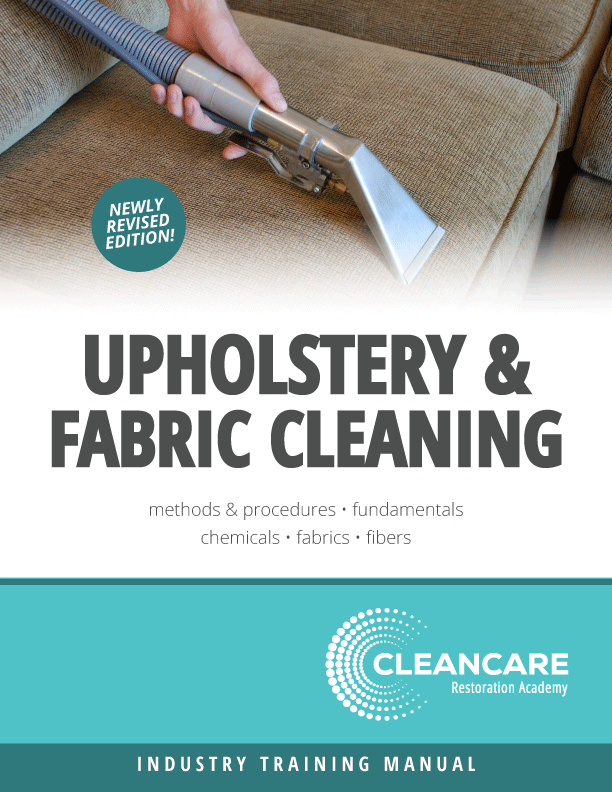Coverage for Contents Cleaning

Over the last few years, contents cleaning and restoration has become an important service for restoration and remediation contractors to provide. Not only can it be profitable, it also offers contractors the opportunity to set themselves apart from their competitors. Innovations in methods and new technology have made it not only easier, but also less expensive and safer to perform these services. As you consider adding this as something your firm offers, I strongly encourage you to consider how this will affect your insurance situation. More specifically, it’s important that you confirm your business is adequately covered should you add this service, because many restoration and remediation firms are not!
Like standard fire, water, and smoke restoration of structures, contents cleaning and restoration comes with liability loss exposures, because you’re working on and restoring someone else’s property. There is always the risk of damaging that property during work or storage, leaving you liable or responsible to pay for repairs or replacement. Similarly, both structural restoration and contents restoration operations are often not fully or properly covered by standard liability insurance policies such as a Businessowners Policy (BOP) or a Commercial General Liability (GL) policy.
Today, we’ll focus on the gaps in coverage on standard liability policies for contents cleaning and restoration loss exposures. However, if you also perform any kind of restoration or remediation on structures, including water extraction, lead or asbestos abatement, mold remediation, or smoke and fire restoration, I highly encourage you to review your insurance program with a qualified insurance professional who is familiar with the restoration and remediation industry. This will help to ensure you are properly covered for what you do for a living. You would be surprised at how many restoration and remediation contractors are not, at no fault of their own!
There is a special relationship created between the contractor and the customer when performing contents restoration and pack outs; this relationship is referred to as bailment. Bailment is created when one party (the Bailee) takes the property of another (the Bailor) into their possession. When you hold someone else’s property in bailment, you become strictly liable for any damages, which means liability whether or not there is fault on your part. In other words, if a tornado hits your building and damages the customer’s property, you will be held responsible even though the tornado was not your fault and was outside of your control.

Imagine responding to a kitchen fire loss. While the kitchen and other damaged areas of the home are remediated for fire, water, and smoke damage, you take many of the homeowner’s belongings back to your office and storage area for cleaning and restoration where they will be kept until the restoration of the home is complete. You have entered into a bailment relationship with the homeowner and, therefore, you are strictly liable for their property while it is in your care. You will be held responsible for any damage or loss to that property even if the damage was not your fault.
Given this liability arrangement, contractors often turn to their GL policy for coverage when a customer’s property is damaged while in their possession. Most restorers are surprised to find there is an exclusion on almost every Commercial General Liability (GL) insurance policy (or the GL coverage part on a BOP) that states coverage does not apply to property damage to property in the “care, custody or control of the insured.” This does not seem like a great news for contractors doing contents cleaning.
The exclusion states there is no coverage for property in the care, custody or control (CCC) of the insured, but what exactly does that mean? The general consensus is this:
- “Care” refers to temporary charge of personal property (i.e. you’re in charge of the stuff),
- “Custody” implies a keeping or guarding of that property (i.e. you’re keeping it safe), and
- “Control” refers to power or authority to manage, superintend, direct or oversee (i.e. you can do what you want with it).
This is taken from a decision by the Supreme Court of Arkansas (Hardware Mut. Cas. Co. v. Crafton, 350 S.W.2d 506 (Ark. 1961))
Not surprisingly, this exclusion does have serious ramifications for contractors performing contents cleaning, pack outs, and storage of customer’s property. In fact, it is the main reason many restoration and remediation contractors are not insured for their contents cleaning and restoration work. The CCC exclusion on the GL policy blows out coverage for the core loss exposures of contents restoration work and pack outs, and it renders a standard GL policy useless in terms of providing coverage for them.
Some of you might be thinking, “What about my property insurance policy? Doesn’t that cover personal property of others when at my location?” This is a common misconception. The reason this doesn’t work is most commercial property policies have a pesky little exclusion that kicks out coverage for property that is more specifically described in another policy. Nine times out of 10, a homeowner’s policy describes the customer’s property better or more specifically than your business property policy. So, your property policy will point to the customer’s insurance policy to provide coverage for the damaged property you held in bailment and deny it on your policy. That seems great and all, but even if the customer’s homeowner’s policy picks up the tab, you can bet that their insurance company will be coming after you for any amounts paid out. The property was damaged or lost under your watch, so you’re back at square one, sitting there without coverage.
The good news is there are insurance policies specifically designed to fill the coverage gap created by this exclusion on the GL policy and most commercial property policies: Bailee’s Coverage. This coverage gets its name from the bailment relationship we discussed above. The bad news is these policies are not all made equal and many of them have serious glitches in coverage for restoration and remediation contractors doing pack outs and contents cleaning. The reason for this is Bailees policies were not originally designed to cover restorers. They were first created for businesses likes dry cleaners, shoe repair shops, and tailors. These trades have much less storage capacity and shorter amounts of time that they hold others’ personal property. For that reason, an off-the-shelf Bailees policy may very well likely have restrictions and limitations that make them gravely inadequate for restoration and remediation contractors. I’ve included a list of the major issues to watch out for:
- Restrictions or limitation on storage and/or duration of storage for personal property of others
- No coverage for property in transit
- Exclusion for property for which you issue a receipt or record of storage
- Coverage is not provided on a direct physical loss basis
- Low/inadequate limits of insurance

This list is a good start, but it is by no means exhaustive. My biggest advice is to partner with an insurance professional who is well-versed in the restoration and remediation industry. All it takes is a little due diligence to get the insurance coverage you need. In many cases, the coverage you need does not increase your insurance premium! It is just a matter of buying the right policy from an insurance agent who knows your business and your insurance needs. Many restorers have complained to me over the years that they cannot find a local insurance agent that is knowledgeable in restoration contractors. Find a wholesale insurance brokerage firm that specializes in the restoration and remediation industry and loves to work with qualified, local agents.
Looking for a reprint of this article?
From high-res PDFs to custom plaques, order your copy today!









